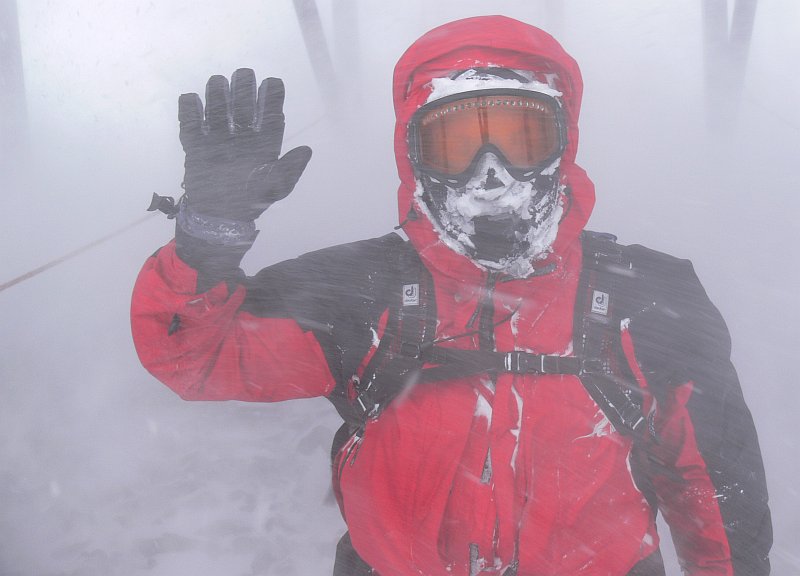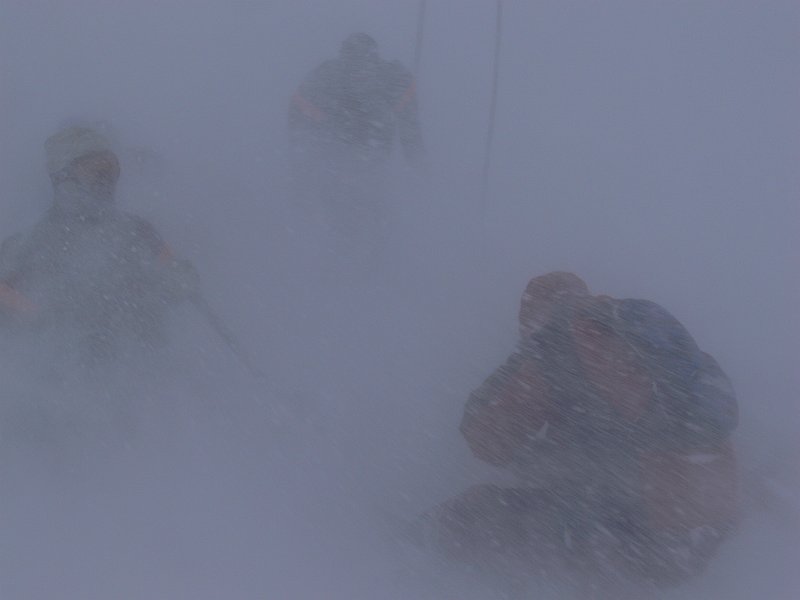Heavy weather
Despite the technologically advanced and comfortable base, certain realities of life in Antarctica cannot be escaped. Antarctica may contain 67% of the world’s fresh water, but in terms of actual precipitation, it is the world’s largest desert. The water is locked away as ice, it never rains, and when snow does fall it is usually in the form of violent and windy storms. Often, the wind is so strong we are not sure if the snow is falling or simply being blown across the landscape. In order to obtain liquid water for drinking, cooking, washing, etc, we have to melt snow on a daily basis. A semi-automated system of two large tanks, with heating elements and pumps, is used for this purpose. I say semi-automated, because the most important part – filling the 4300 litre snow-melting tank with snow and ice – has to be accomplished by good old-fashioned spade-work. The ‘smelly’ must be filled about once a day to meet out average water usage. When a strong wind blows, another factor comes into play; the blowing snow gradually forms a bridge over the opening, and the smelter is covered by a snow-drift. If this is left for too long, the heat from below and pressure from above consolidates the bridge until it becomes rock-hard ice. To combat this, we must venture out and break the bridge, even when foul weather prevents us from working long enough to fill the tank with snow. Fortunately, nature takes pity on us, and often sufficient blowing snow falls in to meet our need for fresh water…if the bridge can be kept open.
For the past two days, a storm has caused the base to disappear into the swirling snow. Winds over 50 knots (90 km/h) and temperatures down to -30°C (with wind-chill) aren’t conducive to outside pursuits, but a trip to the smelter was required. Five of us suited up in multiple layers, including complete facial protection and goggles, took a safety rope, radio and GPS, and ventured out. Using a buddy system not unlike that used for scuba diving, we fought the wind down to the smelter (about 400m away from the base), dug it open, and trudged back. The blowing snow brought visibility as low as 3 meters, and goggles rapidly ice up under these conditions, making the work almost by feel. ‘Blizzard’ seems such an innocent word when compared to the sheer power of the storm – it is an effort to stay standing; the speed of the wind combined with the bitter, dry cold builds up static charge so that touching objects or other people results in jolt of electricity; the noise of the wind and bleak view leaves each person with a feeling of isolation even when warmth and safety is only a few hundred meters away.


March 6th, 2008 at 10:38 am
Madness. I imagine aliens watching through their hypertelescopes and thinking, “What do these warm-blooded soft-skinned carbon-based bipeds think they are doing in conditions so obviously hostile to their survival?”
March 7th, 2008 at 1:18 pm
Padmelad, a wise man once said “If it were easy, it wouldn’t be fun.”